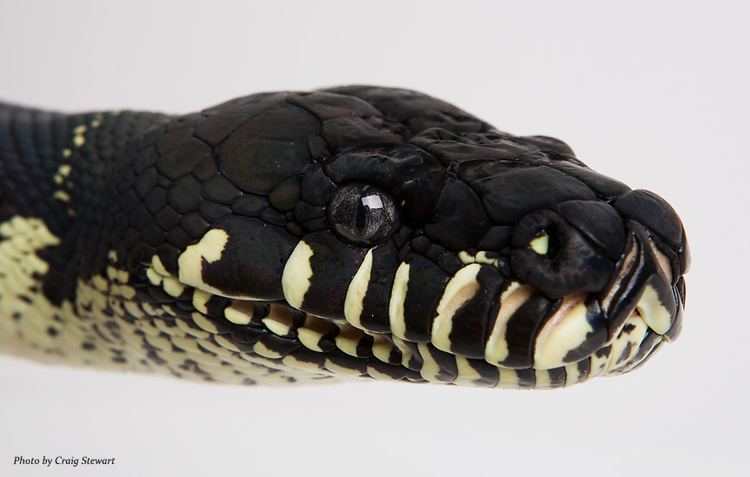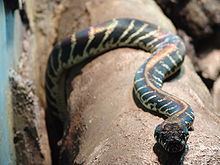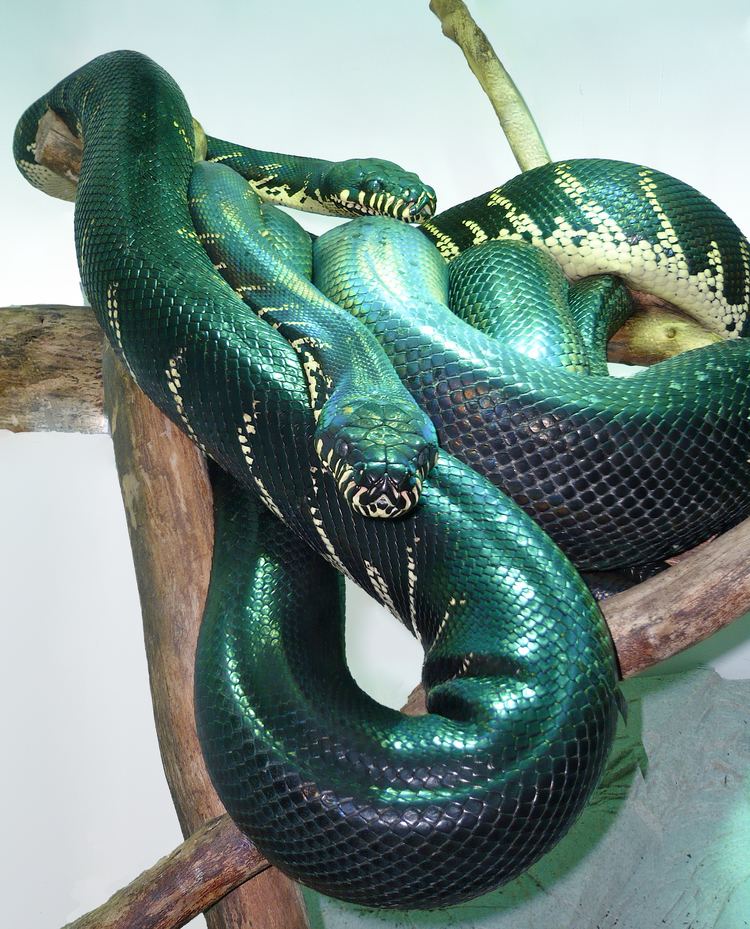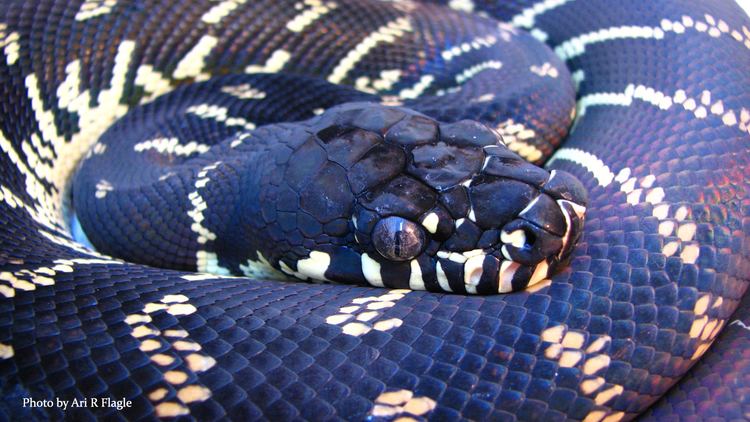Kingdom Animalia Subphylum Vertebrata Suborder Serpentes Scientific name Morelia boeleni Rank Species | Phylum Chordata Order Squamata Genus Morelia Higher classification Morelia | |
Similar Snake, Python family, Morelia, Reptile, Morelia amethistina | ||
Boelen s python morelia boeleni
Morelia boeleni is a non-venomous python species found in the mountains of New Guinea. No subspecies are currently recognized.
Contents
- Boelen s python morelia boeleni
- Morelia boeleni cb 2013
- Etymology
- Description
- Conservation status
- Common names
- Geographic range
- Habitat
- Diet
- Captivity
- References

Morelia boeleni cb 2013
Etymology
The specific name, boeleni, is in honor of K.W.J. Boelen, M.D., who collected the holotype specimen.
Description

Adults: The upperside color pattern is dark bluish-black or purplish-black and the anterior part of underside white to pale yellow. The white extends up the flanks as a series of streaks. The upper and lower lips are also patterned with pale or whitish labial scales. The black portions are commonly iridescent with an oil-slick like sheen. The body is stocky and the head large. Neonates are predominantly red upon emerging from the egg. Gradual black pigmentation presents itself as the neonate grows and sheds. Ontogenetic color charge begins as the juvenile snake approaches 1 meter in length. Adults may be up to 3 meters in length.
Conservation status

The unmistakable and famed Boelen's Python receives the highest legal protection possible in Papua New Guinea. It is currently listed on CITES Appendix II.
Common names

Locally it is also known as the Blu Moran or Papa Graun. Within Indonesia, it has several names depending on which language is used. Bahasa Indonesia: Ular Hitam, Ular Sanca Bulan, Piton Hitam, and Ular Buleni.
Geographic range
Found in Indonesia (Western New Guinea in the Wissel Lakes region) and Papua New Guinea (the provinces of Eastern Highlands, Central and Morobe, and Goodenough Island).
The type locality given is "Dimija (3[°] 56' S, 136[°] 18' E), Wissel Lakes, Dutch New Guinea, about 1750 m (5700 feet) above sea-level" [Western New Guinea, Indonesia].
Habitat
The species inhabits forested montane regions of over 1,000 m (3,300 ft) elevation. It is generally encountered on the forest floor, but is also reckoned to be an able climber.
Diet
The diet consists of mammals, lizards, and birds.
Captivity
This species is considered to be highly desirable by private keepers due to its beauty, but is also exceptionally rare in collections. Although captive-born snakes are fairly hardy in captivity, wild-caught individuals are considerably more difficult to keep successfully. Captive breeding is exceedingly rare, and the conditions necessary are still unclear.
